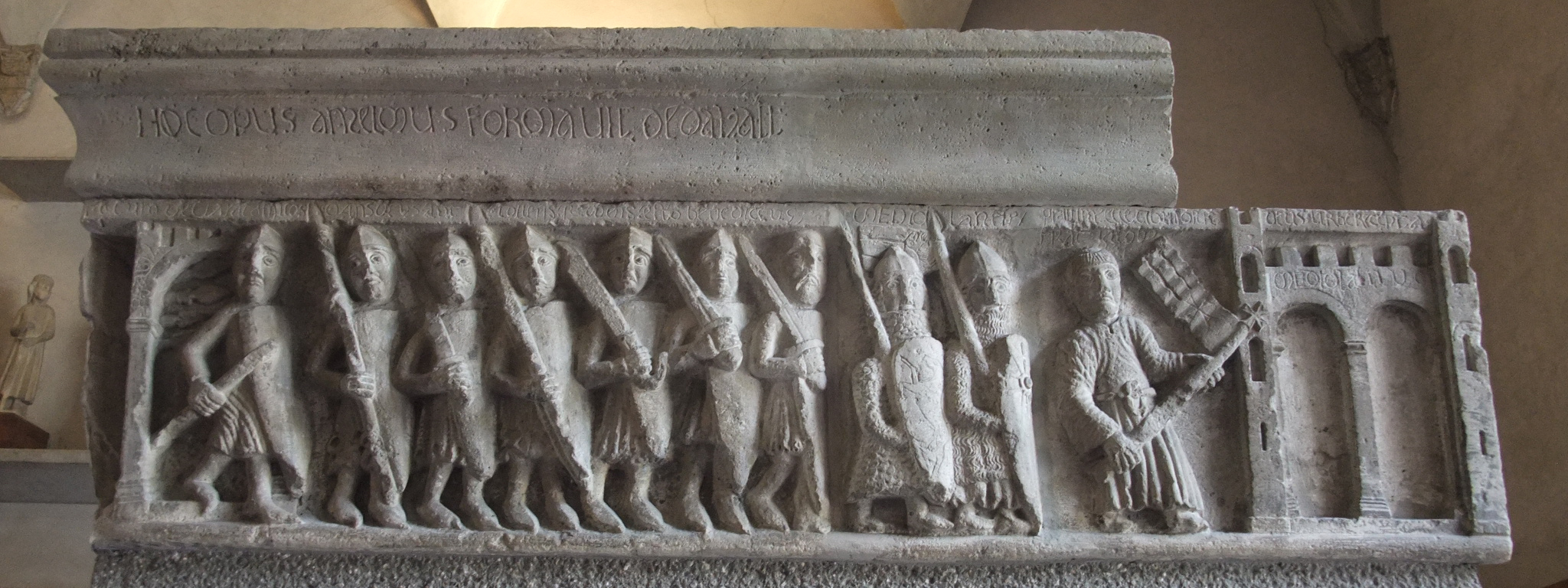
Try Amazon Fresh
Porta Romana frieze, late 12th Century
Return of the Milanese

A detail of the leading figures of the Return of the Milanese on the Porta Romana frieze.


A late-12th century frieze of 9 figures on the Porta Romana once in Milan (now in Castello Sforzesco), depicting the Milanese militia returning to their city in 1166 following their eviction by Frederick I Barbarossa in 1162. Of the 9 militiamen the front 2 are armoured and of the other 7; 4 carry spears, 2 have swords, and the seventh has a falchion.
Frieze of a romanesque capital from the (now demolished) Porta Romana Gate, from the inner circle of the city walls, built in 1171 and demolished in 1793. It portrays the return of the people of Milan to the ruins of their town, which had been demolished by emperor Frederick I, Barbarossa in 1167, and which they rebuilt in 1171. The relief is signed by a sculptor "Anselmus" and now stands in the Museum of Ancient Art in the Castello Sforzesco in Milan, Italy, room 6.
Referenced on p.219, Arms and Armour of the Crusading Era, 1050-1350, Western Europe and the Crusader States by David Nicolle
578A-F Carved relief from Porta Romana, Lombardy, 1167
(Sforza Castle Museum, Milan, Italy)
The Porta Romana carvings are believed to show the Milanese militia. Most are unarmoured infantry (I-O) but some wear full armour. Two of the latter (G and H) might represent the city's aristocratic cavalry. The differences in their armour probably result from various ways of indicating mail hauberks, but the fact that the coif of one figure (G) bulges considerably beneath the helmet could indicate a padded garment or even some very unusual form of scale armour. This figure also has a slightly peculiar helmet, perhaps of segmented construction, with a splayed nasal. The other mailed man has an ordinary conical helmet with a nasal. Both have large kite-shaped shields and spears or lances. The less well-equipped presumed infantry also include interesting features. All save the bearded leading man have helmets with peculiarly small nasals. Some are segmented (I, J and L), others clearly not so (A-C, M-N). Most are pointed but a few are round. Most figures have spears and very large flat-topped, and in some cases round based, shields, just as are described in the written sources. Those nearer the head of the column have swords (N and O). One clearly has an early form of falchion (M) similar to a weapon on a comparably dated carving from Burgundy. A knobbed mace is also shown (E).